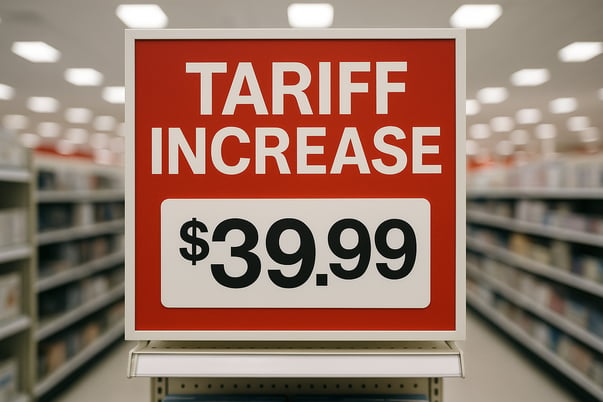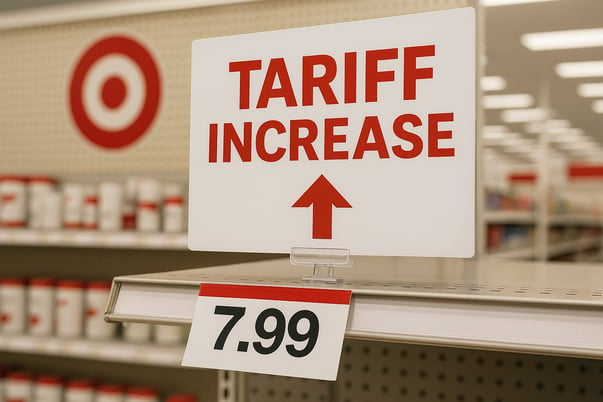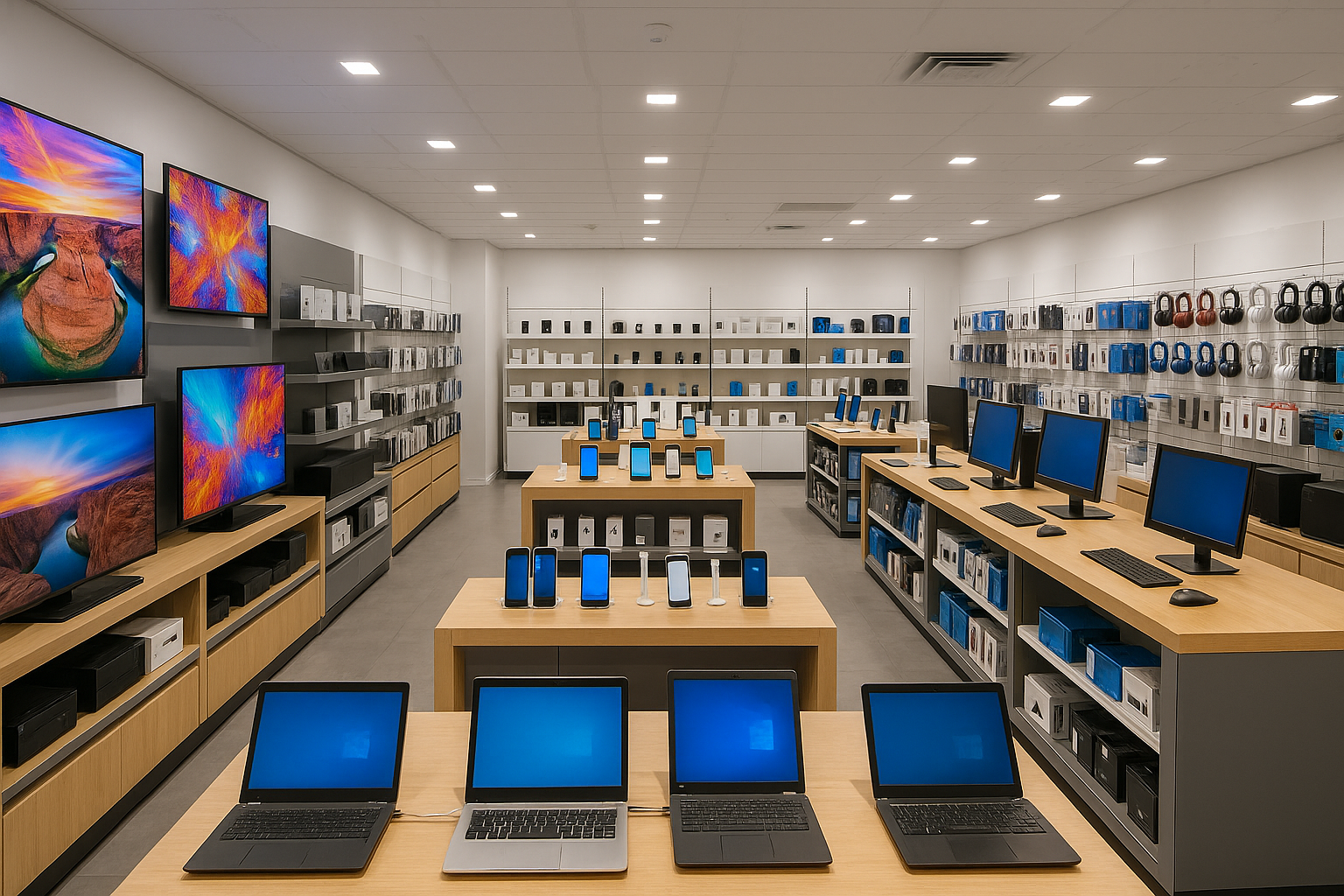When Tariffs Hit, Will Your Margins Hold? How Retailers Can Stay Ahead with Predictive Pricing
When Tariffs Hit, Will Your Margins Hold? How Retailers Can Stay Ahead with Predictive Pricing
Tariffs have become a powerful force reshaping global supply chains. Whether it's a sudden 50% levy on aluminum or a 100% duty on semiconductors, these shifts are seismic enough to upend pricing strategies overnight. But in retail, it's not just the tariff itself that causes profit loss. It's how companies react to it.
When businesses depend on lagging reports or manual analysis, they default to blunt responses: blanket price hikes, margin absorption, or reactive promotions. These tactics may work in the short term, but they erode trust, distort customer expectations, and degrade competitiveness.
That's why predictive pricing, powered by real-time insights and AI, is not only smarter but essential.
While most headlines focus on the political drama behind tariffs, the true disruption begins in the supply chain and ends at the register. To fully understand the threat, we need to examine first what tariffs we are dealing with.
Understanding the Tariff Landscape
Let’s clarify just how volatile tariffs are in 2025:
- General Imports: A 10% universal baseline tariff applies to all imports (except Canada and Mexico), effective April 5, 2025.
- Country-Specific Rates: After April 9, variable "reciprocal" tariffs were applied, reaching up to 145% for China, 50% for Lesotho, and 46% for Vietnam.
- Steel and Aluminum: These critical materials face tariff increases from 25% to 50% starting June 2025.
- Semiconductors: A proposed 100% tariff on imported chips and semiconductors, with exemptions for companies investing in U.S. production.
- Apparel Imports: Tariffs on clothes surged. April-May 2025 saw rising rates from 13.9% to 23.8%, with peaks reaching 69.1% amid policy escalation.
Sadly, this is the new normal. Without a dynamic pricing strategy, retailers face one of two unattractive choices: swallow cost with margin erosion or hike prices across the board, often damaging demand.
Knowing the numbers is only half the challenge. The bigger issue is how and when retailers respond to these sudden increases in cost. Unfortunately, the traditional playbook is far too slow for today’s market dynamics.
Why Retailers React Poorly to Tariffs

When tariffs hit, the financial shock runs deep. For many retailers, especially those operating with legacy pricing processes, the instinct is reactive. They either pass costs directly to the consumer without nuance or delay changes entirely to avoid backlash.
Both choices are risky:
- A flat price hike can tank volume.
- A delayed response eats into margins.
- Promos applied without factoring in new costs can lead to net losses.
Complicating this are layered dynamics: tariffs may affect only certain categories, apply by origin country, or vary by vendor relationship. Static rules and spreadsheets simply can’t keep up.
But there's a better approach: one that doesn't wait for the damage, but anticipates it. This is where predictive pricing enters the picture.
The Predictive Advantage: Hypersonix Pricing AI
Hypersonix’s Pricing AI empowers retailers to stay ahead of market shocks like tariffs. How?
- What-If Simulation Engine: Model tariff scenarios before they hit your margins. Simulate how a 40%, 70%, or 100% cost increase would impact your price ladder.
- Elasticity-Aware Recommendations: Understand how price-sensitive your categories are and apply changes only where consumers are least likely to churn.
- Cost Pass-Through Modeling: Instead of flat markups, distribute costs intelligently based on segment, region, product lifecycle, or demand patterns.
- Competitor-Aware Pricing: Know how competitors are adjusting and keep your prices relevant in real time, not a month later.
Retailers using Hypersonix can preempt the margin drop and forecast profitable pricing pathways.
Case in Point: Apparel Under Pressure
Let’s consider an apparel retailer importing 80% of their SKUs from Vietnam and Bangladesh. In June 2025, they face average tariff hikes from 15% to 25%. That’s a double-digit cost hit, threatening their seasonal margins.
Most retailers without predictive pricing either raise prices chain-wide or absorb losses. But using Hypersonix, the apparel retailer can:
- Simulate multiple tariff levels across categories.
- Identify regions with high elasticity (and avoid aggressive markups there).
- Create targeted promotions where pricing perception needs offsetting.
- Monitor competitor price shifts on platforms like Amazon and Walmart.
This allows for a smart mix of selective increases, value messaging, and timely promotions protecting volume and margin.
While price increases may feel like the most straightforward response to rising costs, especially under new tariffs, not all products or customers are affected equally. That’s why blanket hikes often do more harm than good.

Why Blanket Price Hikes Are a Mistake
Retailers often apply blanket markups when tariffs strike. It feels safer than doing nothing. But here’s what usually happens:
- Sales drop in price-sensitive markets.
- High-margin items carry unnecessary hikes.
- Promotions cannibalize profit if not recalibrated.
- Shoppers shift loyalty due to perceived overpricing.
Predictive pricing avoids this by aligning decisions to real-time demand, competitive response, and cost impact.
As retailers consider how to respond, one crucial factor often overlooked is what competitors are doing. In a tariff-influenced landscape, competitive pricing intelligence becomes essential, not optional.
Competitive Pricing in a Tariff World
Hypersonix Competitor AI complements this strategy. While Pricing AI optimizes from within, Competitor AI helps you:
- Track competitor pricing daily.
- Spot early signs of pass-through pricing.
- Benchmark similar SKUs across marketplaces.
- Spot substitution strategies (e.g., DTC brands switching from China to India).
Together, these tools build a full-stack response mechanism that keeps your pricing relevant, competitive, and profitable.
One industry feeling the weight of tariff shifts more acutely than most is consumer electronics. To understand the real-world implications of strategic vs. reactive pricing, let’s take a closer look.
Industry Spotlight: Electronics Retail
In electronics, the situation is even more precarious. With a proposed 100% tariff on imported semiconductors, major categories like phones, laptops, routers, and smart home devices are at risk.
Margins are thin already, and components make up most of the cost. If an electronics retailer absorbs the full 100%, they bleed margin. If they raise prices indiscriminately, demand drops.
Predictive pricing lets them simulate:
- Which SKUs have substitution options.
- How to price accessories or bundles differently.
- How to repackage value through warranties, financing, or loyalty perks.
Instead of responding to cost, they respond to customer behavior with data-backed agility.
Conclusion: Tariffs Are the Test, Predictive Pricing Is the Answer
Tariffs are not going away. If anything, they’re becoming a recurring feature of the global trade landscape. That makes reactive pricing an unsustainable strategy.
Retailers need the ability to simulate, adjust, and deploy pricing changes within days, not weeks. They need to understand their elasticity, monitor competitors, and protect both margin and volume.
With Hypersonix Pricing AI and Competitor AI, you don’t just react to tariffs. You get ahead of them. You turn potential losses into opportunities for precision and leadership.
When tariffs hit, the question isn’t if your costs will rise. It’s whether your pricing strategy can rise with them.





